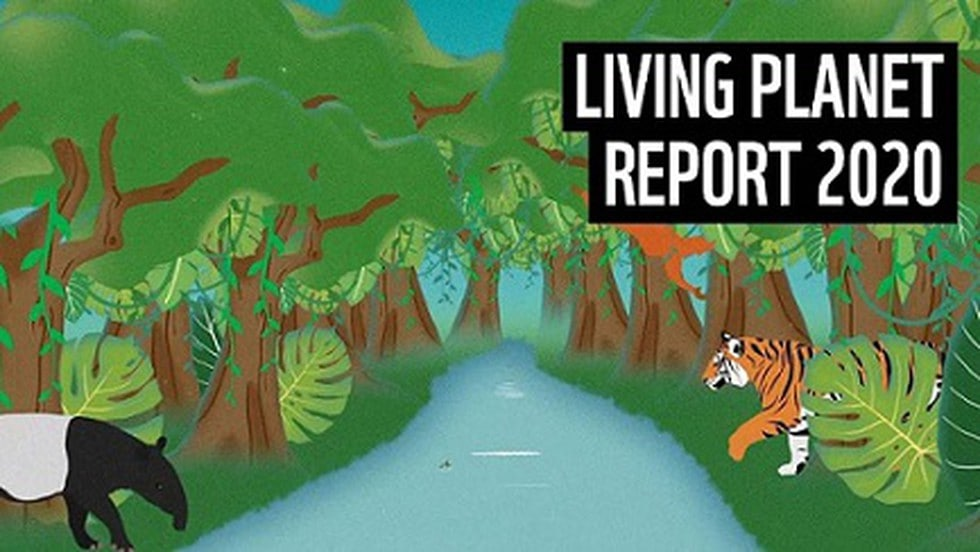CURRENT AFFAIRS
Get the most updated and recent current affair content on Padhaikaro.com
Living Planet Report 2020
- Vaid's ICS, Lucknow
- 19, Oct 2021


Wildlife populations have fallen by more than two-thirds over the last 50 years, according to a Living Planet Report 2020 of the World Wildlife Fund.
Some facts related to Biodiversity:
There has been a reduction of 68% in the global wildlife population between 1970 and 2016.
The highest biodiversity loss due to land use change:
(1) Europe and Central Asia at 57.9 %;
(2) North America at 52.5 %;
(3) Latin America and Caribbean at 51.2 %;
(4) Africa at 45.9 %;
(5) Asia at 43%.
The sharpest declines have occurred throughout the world’s rivers and lakes, where freshwater wildlife has plummeted by 84% since 1970 — about 4% per year.
Related to Land and Oceans:
75% of the Earth’s ice-free land surface has already been significantly altered.
Most of the oceans are polluted.
More than 85% of the area of wetlands has been lost during 1970-2016.
India’s scenario:
India has 2.4% global land share, about 8% global biodiversity and around 16% global population
However, it has lost 12% of its wild mammals, 19% amphibians and 3% birds over the last five decades.
India’s ecological footprint per person is less than 1.6 global hectares (gha)/person (smaller than that of many large countries). But, its high population size has made the gross footprint significantly high.
Ecological Footprint: It is the amount of the environment necessary to produce the goods and services necessary to support a particular lifestyle.
Factors responsible for this decline:
Changes in how land is used – from pristine forest to cropland or pasture – rank among the greatest threats to biodiversity on land worldwide.
Biodiversity:
It refers to all the varieties of life that can be found on Earth (plants, animals, fungi and microorganisms) as well as to the communities that they form and the habitats in which they live.
As per the Convention on Biological Diversity (Article 2): Biological Diversity means the variability among living organisms from all sources including, inter alia, terrestrial, marine and other aquatic ecosystems and the ecological complexes of which they are part; this includes diversity within species, between species and of ecosystems.
It can be understood at three levels:
Species diversity refers to the variety of different species (plants, animals, fungi and microorganisms) such as palm trees, elephants or bacteria.
Genetic diversity corresponds to the variety of genes contained in plants, animals, fungi and microorganisms. It occurs within a species as well as between species.
Ecosystem diversity refers to all the different habitats – or places – that exist, like tropical or temperate forests, hot and cold deserts, wetlands, rivers, mountains, coral reefs, etc.
Facts for Prelims:
Dark Fiber: Dark Fiber also known as unlit Fiber is an unused optical fiber that has been laid but is not currently being used in fiber-optic communications.
- Since fibre-optic cable transmits information in the form of light pulses, a “dark” cable refers to one through which light pulses are not being transmitted.
- Companies lay extra optical fibres in order to avoid cost repetition when more bandwidth is needed.
- Recently major telecom service providers in India, have approached the state-run Bharat Broadband Network Limited (BBNL) to use its dark fiber.
- It will help the telecom service providers to cut down on their capital expenditure.